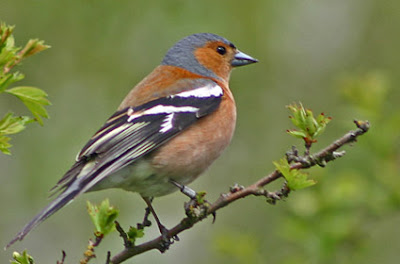On Wednesday during one of our twice-monthly work mornings we heard a sound like parrots fighting. It was a chorus of Jays squawking. Were they quarreling over territory or mobbing an owl? We didn't find out and we didn't see them. Like people who make a lot of noise they are actually rather shy. They are at home in woodland where they can easily hide, but very striking if you do catch a glimpse of one.
They are mostly pinky grey with black and white on their wings and tail, and with a black moustache. The most startling feature is the blue patch on the bend of their wings.
They do sometimes eat other birds' eggs and nestlings in summer, but their favourite foods in autumn are beech nuts and acorns.
Indeed it is because they bury acorns in grassy places as a winter store of food, that we get oak trees growing in grassland, as you can see in this shot of the pylon field at Filnore, taken last April. We didn't plant the three young oaks in this picture, jays did.







































